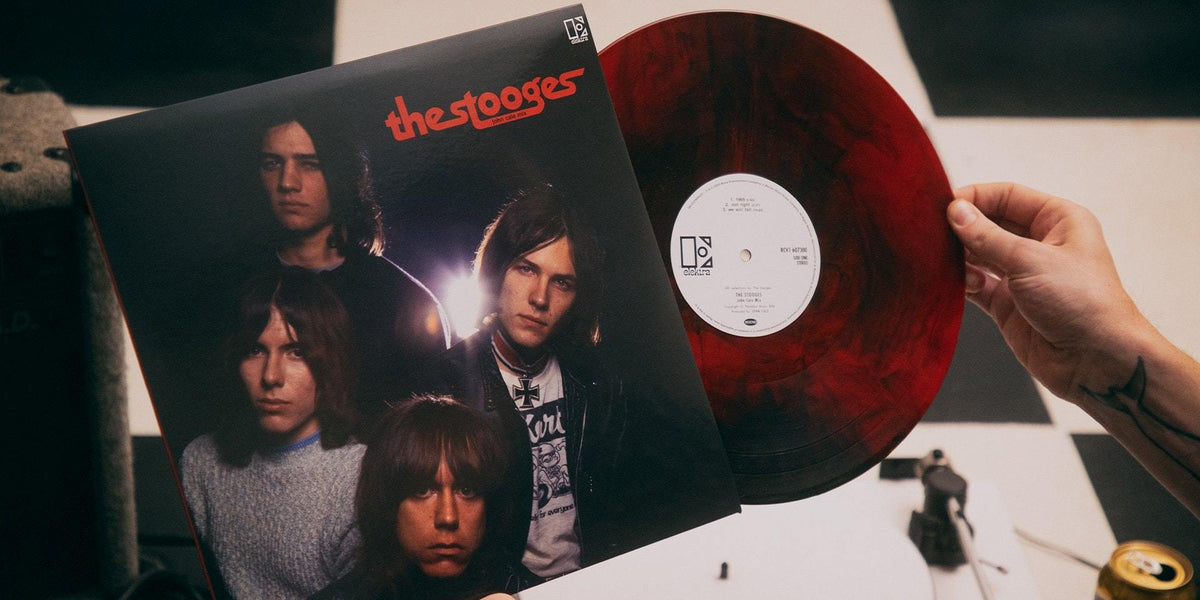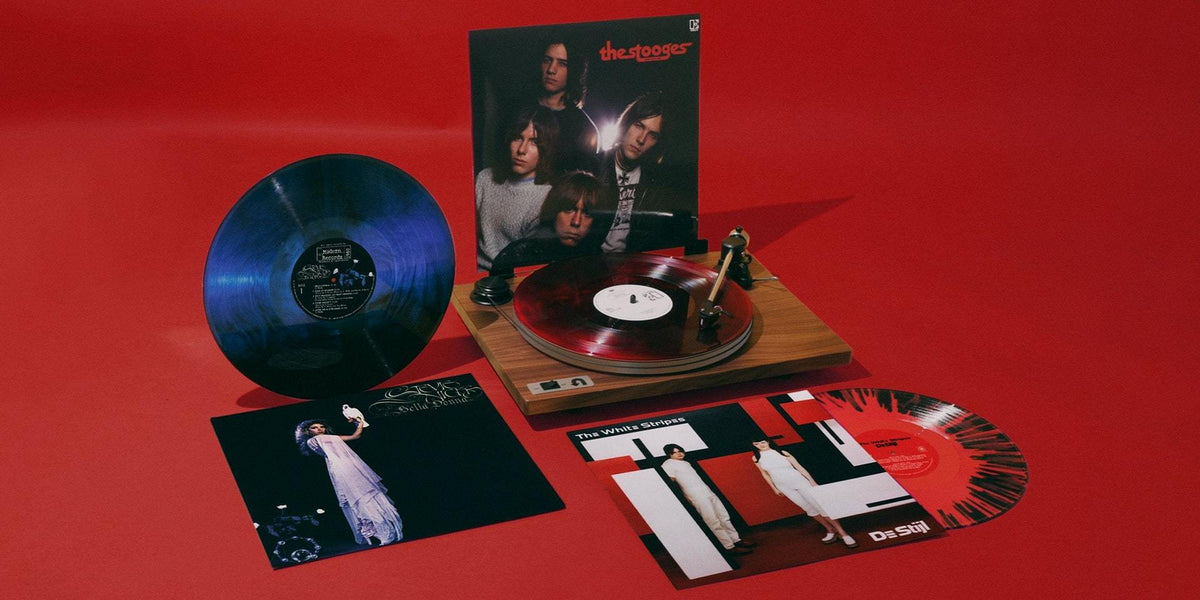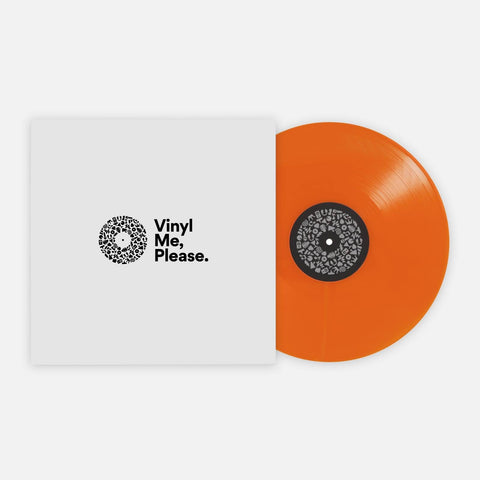Oh My, And A Boo Hoo: 50 Years Of ‘The Stooges’
We Look Back On Arguably The Most Important Hard Rock Album Ever Made
You have to remember what it was like before. For a full quarter of 1969, the No. 1 album in the country was the soundtrack to Hair, a musical that has aged worse that Cats, and concerns hippies teaching a Vietnam draftee the power of good vibes and flowers, and … well, I don’t know, you haven’t seen that shit, and neither have I. Blood, Sweat and Tears had a No. 1 album for seven weeks and, no offense to Al Kooper, but nothing on that group’s self-titled told life like it really was in 1969. The music that made its way to the charts back then, and which fills out the OK Boomer soundtracks of movies with names that might as well be The Sixties Ruled, Guys!, wasn’t speaking for how life was on the ground for a Michigan resident raised by a working class family whose only prospects were the already-dying assembly lines or the frontlines of Vietnam. No, no one was making music for how much it had to fucking suck to be 22 in 1969, and know that the “Wear Flowers in Your Hair” promise of San Francisco and the turn on, tune in, drop out thing was meant for kids with parents who could send them to private colleges out east. Hair might as well been the music of the roaring ’20s; it wasn’t any more “real” than the depictions of flappers and F. Scott Fitzgerald getting soused in marble-columned homes.
And then, 10 days before the opening of Woodstock — which, it needs to be remembered, was supposed to be opened by Sweetwater, a band that behaved like 1967’s Summer of Love was the peak of human existence — a single solitary album changed all that. It was a commercial bomb, an embarrassment to all the suits involved, the producer’s original mix abandoned, the band decried as troglodytes and animals from the literal trailer park, and called “stupid” by the biggest rock critic of the day, Robert Christgau. But it also is the ground zero for every angry album of noise that came since; without it, you don’t get glam, you don’t get British or American punk, you don’t get pop-punk, Green Day, and you maybe don’t the evolutions that happened to bring us every type of metal music. You don’t get any of it. Instead, we’re living in a world where Hair inherits the world, where there’s no one to say fuck you and there’s no one to say We’re fucked and we’re mad about it. Thank God, and Michigan, then, for The Stooges.
The Stooges were never a safe bet; not only in the “are they going to be coherent enough for shows?” way, but especially in the “These guys are gonna be stars!” way record labels are usually looking for. Fronted by James Newell Osterberg Jr., who came from a trailer park in Ann Arbor, Michigan, and who played the drums as a kid after his parents gave up their bedroom for him to have the space to play. Eventually ol’ James was banging the skins in a band called the Iguanas when he got his nickname, Iggy Pop. Sometime in 1967, at 20, and dropped out of the University of Michigan, Iggy saw the Doors, who were then known as a travelling disaster, as frontman Jim Morrison turned each gig into something like performance art crossed with a riot. Iggy decided he didn’t want to be behind the kit, and wanted to be out front doing that. He linked up with the Asheton Brothers Scott and Ron — two guys who liked to party as much as he did, and could play the shit out of their drums and guitar — and Dave Alexander, a guy they all liked who had just recently started teaching himself to play the bass. They played their first show as the Psychedelic Stooges on Halloween, 1967. They’d ditch the hippie shit soon enough.
Iggy and the Stooges quickly got a reputation around Michigan, particularly in Detroit, where another band of street toughs called the MC5 had set up shop. The bands became kindred spirits, and often shared bills; the MC5, though, always sounded like they wanted to be hard rock Motown, where the Stooges felt like they were a raw nerve set to make music. Anger and self-loathing and depression set to primitive funeral marches and barely contained war parades. Eventually, an enterprising A&R man from Elektra named Danny Fields signed both bands, in a bid to make Elektra the home of new Detroit rock. Both the Stooges and MC5 would be unmitigated disasters from a corporate level, the MC5 lasting a single album (1969’s live proto-punk volley Kick Out The Jams) before their careers flamed out in booze, drug busts, and legal troubles.
If Elektra was worried their two-pronged Detroit rock machine was in danger following the MC5’s debut getting savaged by Lester Bangs in the pages of Rolling Stone — he eventually came around on it, as critics were allowed to do in those days — they had still had no fear in April 1969, when they sent the Stooges to Hit Factory in New York City to record their self-titled debut. They hired a recent underground rock hero named John Cale to produce the album, fresh off his time in the Velvet Underground, where his artiste sensibilities meshed with Lou Reed’s misanthropy to make the first two Velvet Underground albums, case studies in taking a label’s money, doing something no one had done before, and paying the cost for it with low sales while gaining a reputation for being ahead of your time (which the Stooges would soon follow). The Stooges came to the studio with only five songs (“No Fun,” “1969,” “Ann,” “We Will Fall,” and “I Wanna Be Your Dog”), thinking that’s all they needed to make an LP, and when they were told they needed more, lied and said they had them, and went off and wrote three more (“Not Right,” “Little Doll,” and “Real Cool Time”), playing them for the first time as a whole group in front of Cale in the studio.
Those eight songs served as the foundation for too many rock movements to line up in paragraph form here, but more than 50 years later, the thing that has to be remembered is how shocking something like “I Wanna Be Your Dog” had to be to people who were used to “Incense and Peppermints.” That opening noise is like an electric chair being fired up, and the death march riff sounds more evil than any Swedish Black Metal band has mustered with 50 years advancement in guitar technology. Iggy didn’t want to hold your hand, he didn’t want to be your baby; he knew he was a dirty dog, and felt he deserved to be treated as such. Iggy studied at the altar of the Chicago blues for a time in the ’60s, and from there he took the willingness to be self-effacing and pitiful; no one sounded more put through a meat-grinder before or since.
The Stooges took rock and stripped it down to its barest studs and refused to build it back up on The Stooges. Something like “No Fun” might have read to people like Robert Christgau as “stupid” in 1969, but it’s without any artifice; it’s all attitude, all raw power. “1969” was the first song about teenage malaise and boredom to actually sound like it was made by people who were sick and tired of being sick and tired; entire bands’ discographies would be pilfered from its two verses:
“Well it's 1969 okay All across the USA It's another year For me and you Another year With nothing to do
Last year I was 21 I didn't have a lot of fun And now I'm gonna be 22 I say oh my and a boo hoo And now I'm gonna be 22 I say oh my and a boo hoo”
When the band finished recording in April, 1969, Cale delivered his mix to Elektra, and things hit the fan. Mixed in a raw, naked form that emphasized the sinister, wild side of the band over sonic clarity, the original Cale mix of the album was rejected by Elektra, in a portent of things to come. Cale’s mixes were thought lost before resurfacing in the early ’00s, and after being originally released at the wrong speed, they’re out on the right speed via Vinyl Me, Please’s Essentials right now, on vinyl for the first time.
But in 1969, Cale’s mixes weren’t appreciated; Elektra president Jac Holzman and Iggy himself remixed the album, bringing the vocals higher into the mix, and lowering some of the abrasiveness. At this point, it was clear both men thought the Stooges had some commercial potential if they just cleaned it up, which, even without hindsight, is enough to make you spray water out of your nose. Albums this hard didn’t move units in 1969, and they don’t move them now. The people at the front of the herd hacking their way through the wilderness don’t get to enjoy the fruits of the civilization they made possible, and The Stooges hit the marketplace like a brick to the philtrum. It made next to no impact on the charts (it eventually rose to 106 on Billboard’s album charts, but died quickly), was savaged in reviews, and was left to be consistently rediscovered by every generation of fucked up kids who came since; it eventually got its place in the pantheon, but by as much force as is present on the album.
To Elektra’s credit, they kept the Stooges on roster for another LP; 1970’s Fun House added jazz skronk to its mix via saxophonist Don Mackay, but when it too went over like a lead balloon, the band broke up, amid Iggy’s worsening heroin problems, and a lack of much juice in their career. Thanks to David Bowie staking his new stardom on his adoration for Iggy, the band reformed in 1973 on Columbia with Raw Power, and around guitarist James Williamson, whose leads were more punk fury than Asheton’s blues-based piledrivers, and that band broke up almost immediately when Iggy went further into heroin and began palling around with Bowie as a solo artist. Iggy would become something of a solo star and a cultural icon over the years, but until the early ’00s, he and the Stooges remained mostly broken up. However, they reformed with the Ashetons (Dave Alexander died in 1975 of alcoholism-related illness) back on guitar on drums, where they’d both remain until their deaths in 2009 (guitarist Ron) and 2014 (drummer Scott).
Iggy has talked recently of packing it in for good, his legacy cemented under nuclear-blast level concrete at this point. And he should; the man has lived enough lives for a whole litter of kittens. His debut album remains one of the most direct statements of purposes for a recorded body of work that has maybe ever existed; Iggy and the Stooges came to cave in heads, and it's taken them more than 50 years to even think about stopping.
Image above from Getty Images
Andrew Winistorfer is Senior Director of Music and Editorial at Vinyl Me, Please, and a writer and editor of their books, 100 Albums You Need in Your Collection and The Best Record Stores in the United States. He’s written Listening Notes for more than 30 VMP releases, co-produced multiple VMP Anthologies, and executive produced the VMP Anthologies The Story of Vanguard, The Story of Willie Nelson, Miles Davis: The Electric Years and The Story of Waylon Jennings. He lives in Saint Paul, Minnesota.
Related Articles
Join the Club!
Join Now, Starting at $36Pages






